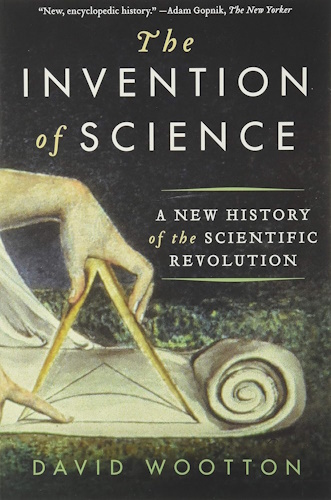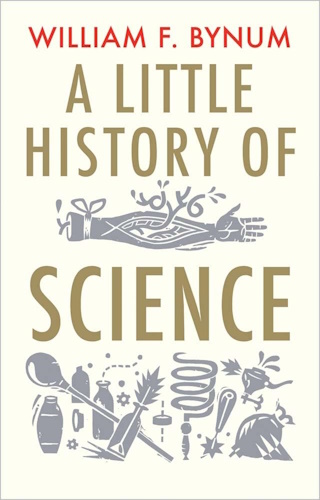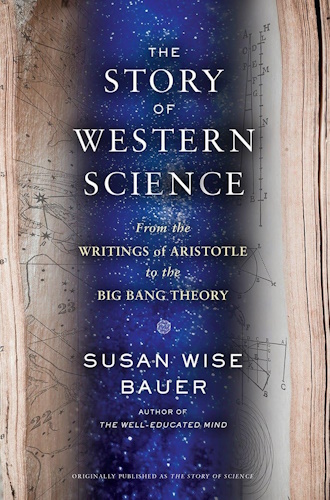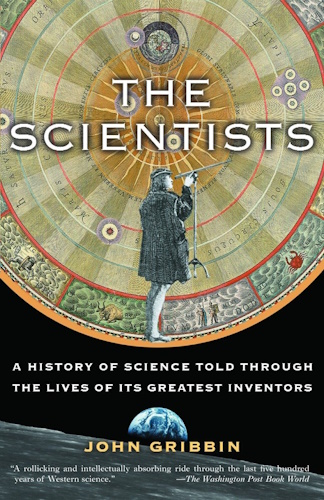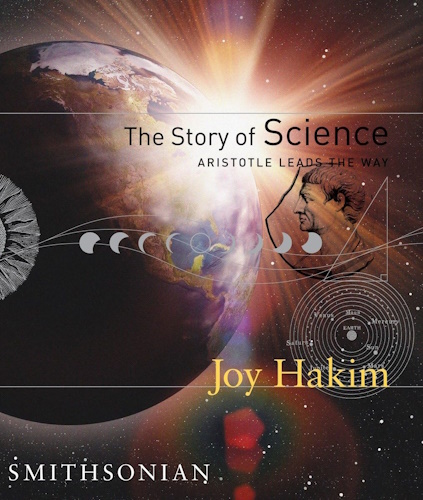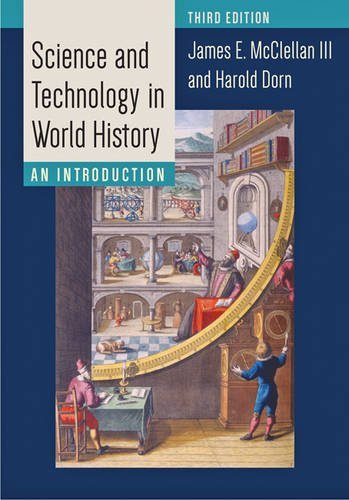![]()
The Corruption of Science in America
by
J. Marvin Herndon, Ph.D
The Dot Connector Magazine/Sott.net
Tue, 30 Aug 2011 05:10 UTC
![]()
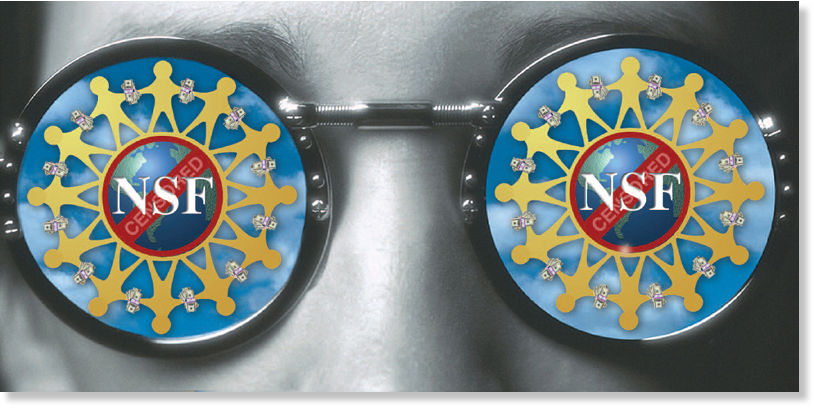
Truth is the pillar of civilization. The word 'truth' occurs 224 times in the King James Version of the Holy Bible; witnesses testifying in American courts and before the United States Congress must swear to tell the truth; and, laws and civil codes require truth in advertising and in business practices, to list just a few examples.
The purpose of science is to discover the true nature of Earth and Universe and to convey that knowledge truthfully to people everywhere. Science gives birth to technology that makes our lives easier and better. Science improves our health and enables us to see our world in ways never before envisioned. It uplifts spirits and engenders optimism. And, science provides a truth-standard, securely anchored in the properties of matter, a means to expose and debunk the charlatans and science-barbarians who would lie, cheat, steal, and tyrannize under the guise of science.
Prior to World War II there was little government financial support for science. Nevertheless, the 20th century opened and seemed to offer the promise of an unparalleled age of enlightenment and reason. While supporting himself as a Swiss patent clerk, Albert Einstein explained Brownian motion, the photo-electric effect, and special relativity. Niels Bohr, supported by grants from the Carlsberg Brewery, made fundamental discoveries about atomic structure and served as a focal point and driving force for the collaborative effort that yielded quantum mechanics, the field of science underpinning the solid-state electronics technology that makes possible modern communications and computers. For a time, the meanings of new observations were actively debated. Fertile imaginations put forth ideas that challenged prevailing views. New ideas and new understandings began to emerge, sometimes precise, sometimes flawed, but tending toward truth and inspiring more new ideas and inspiring yet further debate. Individual imagination and creativity, driven by the quest for a true understanding of the nature of Earth and Universe, produced a sense of enthusiasm and excitement; new insights and discoveries enlightened the general public and kindled the imaginations of the young. An air of optimism prevailed.
Although money for science at the time was in short supply, scientists maintained a kind of self-discipline. A graduate student working on a Ph.D. degree was expected to make a new discovery to earn that degree, even if it meant starting over after years of work because someone else made the discovery first. Self-discipline was also part of the scientific publication system. Prior to World War II, when a scientist wanted to publish a paper, the scientist would send it to the editor of a scholarly journal for publication and generally it would be published. A new, unpublished scientist was required to obtain the endorsement of a published scientist before submitting a manuscript. The concept of 'peer review' had not yet been born.
But in the final decades of the 20th century, circumstances began to change. On one hand, outwardly, it seemed we were poised for yet another renaissance, with ready access to powerful new computers, satellite imaging, network data systems, and global communications. But, on the other hand, out of sight and unknown to nearly everyone, something had gone seriously wrong. Beneath the surface lay the foundations of a system which had been corrupted and had evolved to support a 'politically correct' consensus-view of Earth and Universe, while tending to discourage, ignore, stifle and suppress advances and challenges by individuals.

Before World War II, there was very little government funding of science, but that changed because of war-time necessities. In 1951, the U.S. National Science Foundation (NSF) was established to provide support for post-World War II civilian scientific research. The process for administrating the government's science-funding, invented in the early 1950s by NSF, has been adopted, essentially unchanged, by virtually all subsequent U.S. Government science-funding agencies, such as the National Aeronautics and Space Administration (NASA) and the U. S. Department of Energy (DOE).
The problem, I discovered, is that the science-funding process that the NSF invented and passed on to other U.S. Government agencies is seriously and fundamentally flawed. As a consequence, for more than half a century, the NSF has been doing what no foreign power or terrorist organization can do: slowly, imperceptibly undermining American scientific capability, driving America toward third-world status in science and in education, corrupting individuals and institutions, rewarding the deceitful and the institutions that they serve, stifling creative science, and infecting the whole scientific community with flawed anti-science practices based upon an unrealistic vision of human behavior. These are the principal flaws:
NSF Flaw #1: Proposals for scientific funding are generally reviewed by anonymous 'peer reviewers. NSF invented the concept of 'peer review', wherein a scientist's competitors would review and evaluate his/her/their proposal for funding, and the reviewers' identities would be concealed. The idea of using anonymous 'peer reviewers' must have seemed like an administrative stroke of genius because the process was adopted by virtually all government science-funding agencies that followed and almost universally by editors of scientific journals. But no one seems to have considered the lessons of history with respect to secrecy. Secrecy is certainly necessary in matters of national security and defense. But in civilian science, does secrecy and the concomitant freedom from accountability really encourage truthfulness? If secrecy did in fact lead to greater truthfulness, secrecy would be put to great advantage in the courts. Courts have in fact employed secrecy - during the infamous Spanish Inquisition and in virtually every totalitarian dictatorship - and the result is always the same: unscrupulous individuals falsely denounce others and corruption abounds. The application of anonymity and freedom from accountability in the 'peer review' system gives unfair advantage to those who would unjustly berate a competitor's proposal for obtaining funding for research and for publishing research results. Anonymous 'peer review' has become the major science-suppression method of the science-barbarians. Moreover, the perception - real or imagined - that some individuals would do just that has had a chilling effect, forcing scientists to become defensive, adopting only the 'politically correct' consensus-approved viewpoint and refraining from discussing anything that might be considered a challenge to others' work or to the funding agency's programs. And that is not what science is about at all. Not surprisingly, there exists today a widespread perception that to challenge scientific results supported by a U.S. Government agency will lead to loss of one's own support.
NSF Flaw #2: NSF invented the concept of scientists proposing specific projects for funding, which has led to the trivialization and bureaucratization of science. Why so? The problem is that it is absolutely impossible to say beforehand what one will discover that has never before been discovered, and to say what one will do to discover it. The consequence has been the proposing of trivial projects with often non-scientific end-results, such as the widespread practice of making models based upon assumptions, instead of making discoveries. Further, bureaucrat 'program managers' decide which projects are suitable for the programs that they design. Moreover, proposal 'evaluation' is often a guise for 'program managers' and 'peer reviewers' to engage in exclusionary and ethically questionable, anti-competitive practices. There is no incentive for scientists to make important discoveries or to challenge existing ideas; quite the contrary.

NSF Flaw #3: NSF began the now widespread practice of making grants to universities and other non-profit institutions, with scientists, usually faculty members, now being classed as 'principal investigators'. The consequence of that methodology is that there is no direct legal responsibility or liability for the scientists' conduct. All too often scientists misrepresent with impunity the state of scientific knowledge and engage in anti-competitive practices, including the blacklisting of other capable, experienced scientists. University and institution administrators, when made aware of such conduct, in my experience, do nothing to correct it, having neither the expertise nor, with tenure, the perception of authority or responsibility. The result is that American taxpayers' money is wasted on a grand scale and the science produced is greatly inferior to what it might be.
NSF Flaw #4: NSF began the now widespread practice whereby the government pays the publication costs, 'page charges', for scientific articles in journals run by for-profit companies or by special-interest science organizations. Because these publishers demand ownership of copyrights, taxpayers who want to obtain an electronic copy must pay, typically US$40, for an article whose underlying research and publication costs were already paid with taxpayer dollars. Moreover, commercial and protectionist practices often subvert the free exchange of information, which should be part of science, making the publication of contradictions and new advances extremely difficult. Furthermore, publishers have little incentive or mechanism to insist upon truthful representations. For example, in ethical science, published contradictions should be cited, but with the extant system it is common practice to ignore contradictions that may call into question the validity of what is being published. The net result is that unethical scientists frequently deceive the general public and the scientific community, and waste taxpayer-provided money on questionable endeavors.
I have described these four fundamental NSF-instigated flaws that now pervade virtually all civilian U. S. Government-supported science-funding, and have proposed practical ways to correct them [1], which I communicated to two NSF directors, who chose to ignore them. There seems to be a widespread perception of intrinsic 'infallibility' in the government-university complex, wherein any action, regardless of the seriousness of its adverse consequences, is considered beyond reproach.
On December 16, 2004, an individual in the White House to whom I had complained about the inequity of 'peer review' sent me a copy of the U.S. Office of Management and Budget's Final Information Quality Bulletin for Peer Review: December 15, 2004. On December 26, 2004, I sent to the White House my critique of that Bulletin and my recommendations for systemic changes, which were neither appreciated nor implemented [2]. Six years later, the U.S. Government still conducts 'peer review' according to that Bulletin, which: (1) Embodies the tacit assumption that 'peer reviewers' will always be truthful, and fails to provide any instruction, direction, or requirement either to guard against fraudulent 'peer review' or to prosecute those suspected of making untruthful reviews; (2) Approves the application of anonymity and even appears to promote some alleged virtue of its use, "e.g., to encourage candor"; (3) Gives tacit approval to circumstances that allow conflicts of interest and prevents the avoidance of conflicts of interest; and, (4) Fails to recognize or to admit the debilitating consequences of the long-term application of the practices it approves.

One consequence of NSF's invention of anonymous 'peer review' is that publication of scientific papers is often delayed for years or prevented by so-called 'peer-reviews' from competitors, whose primary aim is to debilitate or eliminate their competition. In the 1990s, the National Science Foundation funded the development at Los Alamos National Laboratory of an author self-posting archive, where physicists and mathematicians could post their pre-prints, without interference from their competitors, making them available worldwide almost instantly. That archive underwent various name changes, eventually becoming arXiv.org.
Since its inception, arXiv.org has become the preeminent means of scientific communication in the areas of science and mathematics it hosts. Rather than wade through the many hundreds of individual scientific journals, often having limited access without paying fees, scientists can receive by email a list of daily postings in specific areas of the scientific disciplines hosted by arXiv.org and can download scientific articles of interest without charge. The development of the author self-posting archive might have become the jewel in NSF's crown, one of its greatest achievements. Instead, NSF's mal-administration permitted it to become an instrument for science-suppression, and for blacklisting and discrimination against competent, well-trained scientists worldwide.
On or about 2001, key personnel responsible for developing the author self-posting archive at Los Alamos National Laboratory left that organization to become employed by Cornell University. Presumably in a coordinated way, Cornell University, through a proposal to the National Science Foundation [NSF # 0132355, July 16, 2001], took over ownership of the author self-posting archive, now called arXiv.org, and presumably was given the requested US$958,798 to do that. That proposal contains the following statement made to justify Cornell University's proposed use of a 'refereeing mechanism': "The research archives become less useful once they are inundated for example by submissions from vociferous 'amateurs' promoting their own perpetual motion machines...."
The website archivefreedom.org displays case histories of some of the individuals who have been blacklisted by the arXiv.org administration and its 'secret moderators', and includes a statement by blacklisted-scientist and Nobel Laureate Brian D. Josephson explaining the meaning of blacklisting as applied to arXiv.org [3]. Being blacklisted by arXiv.org means that either your attempts to post scientific papers are disallowed, or they are 'buried', i.e., posted in categories where scientists or mathematicians in the specific area will likely not see them, such as in General Physics or in General Mathematics. The principal consequence of arXiv.org blacklisting is to deceive U.S. Government science-funding officials and individuals conducting scientific investigations and teaching science, keeping them in the dark about new ideas and discoveries. Beyond the financial and professional debilitation suffered by blacklisted scientists and mathematicians, there is also a human toll, as one blacklisted individual noted: "Blacklisted scientists are subject to derision, ignorance, insults, lies, false accusations, personal attacks against them, misrepresentations regarding their research, culture, faith, etc."
Hundreds of thousands of scientific papers have been posted on the author self-posting archive, arXiv.org, without any human intervention at all. Human intervention, but not 'peer-review', occurs only when an individual is 'denounced', intentionally singled out for disparate treatment, through the application of unfair, arbitrary, and capricious standards. Being tagged for disparate human intervention may occur for a number of never-specified reasons. Human intervention is perpetrated by arXiv.org administrators in conspiracy with a small group of arXiv.org 'insiders' who may or may not call themselves 'moderators' and who discriminate in secret and without any accountability. Moreover, there is no recourse: in my experience, Cornell University's librarian, provost and president absolve themselves from any oversight responsibility for the conduct of arXiv.org, referring complaints back to the arXiv.org administrators who are the subject of the complaint in the first place. Being 'denounced' for disparate treatment by secret 'insiders', without recourse, is something I might have expected from the now-defunct Soviet Union or from Ceausescu's Romania. But, here it is in America; bought and paid for by the National Science Foundation. As an American citizen, veteran, and taxpayer, I am justifiably appalled!

In my view, there is something fundamentally wrong with Cornell University receiving U.S. Government grants and contracts to conduct scientific research, and then deceiving the scientific community, via arXiv.org, by not posting or by hiding new advances or contradictions, especially in instances that potentially impact the investigations being performed at government expense at Cornell. Cornell University is a recipient of millions of dollars in U.S. Government grants and contracts, and is one of a pool of competitors for Federal grants and contracts. The National Science Foundation, I submit, made an institutionally-stupid blunder in turning over to Cornell University a powerful tool (arXiv.org) that could be used against its competitors. In doing so, I allege, the U.S. National Science Foundation violated the very law that created NSF:
"In exercising the authority and discharging the functions referred to in the foregoing subsections, it shall be an objective of the Foundation to strengthen research and education in the sciences and engineering, including independent research by individuals, throughout the United States, and to avoid undue concentration of such research and education." [42 United States Code 1862 (e)]
Instead of obeying that law, the U.S. National Science Foundation placed into the hands of one major, well-financed competitor a powerful tool (arXiv.org) which could not only be applied arbitrarily with capricious standards against its competitors, but through such actions would cast a shadow of fear at being 'denounced' in secret and thereupon being blacklisted, further ensuring 'politically correct' consensus conformity and science-suppression. So, what should be done?
In my view, the United States Congress should initiate an investigation into allegations of abuse and possible criminal activity in the acquisition and operation of arXiv.org at Cornell University, including the possibility of complicity and/or acquiescence by individuals at other universities and by other government entities, including the U.S. Department of Justice and the Attorney General of the State of New York. If evidence warrants, the United States Government, I believe, should consider initiating legal action to repossess arXiv.org and put it under aegis of a neutral, non-competitor organization, such as the National Archive or the Library of Congress, as should have been done initially.
The noted economist, George E. P. Box, said essentially this about models: all models are wrong, but some are useful. Generally, models set out to model some observable or hypothetical event or process and achieve the result they seek to obtain by making result-oriented assumptions and tweaking variables; those models do not have to be correct and can generally be replaced with other models. To me, it is much more important to discover the true nature of Earth and Universe than to make such models.
Astronomers have made some truly remarkable observations. Astrophysicists attempt to understand the physical basis underlying those observations by making models based upon assumptions or upon other models based on other assumptions. In the 1920s, scientists discovered thermonuclear fusion, the joining of two very light atomic nuclei with great energy release. The process is called 'thermonuclear' because temperatures of about one million degrees centigrade are required to ignite the reaction. In the 1930s, scientists worked out the thermonuclear reactions thought to power the Sun and other stars. The million degree ignition temperature? It was assumed to be generated when dust and gas collapsed during their formation. But, as I realized later, there are serious impediments to attaining million-degree temperatures in that manner.

A star is like a hydrogen bomb held together by gravity. The thermonuclear fusion reactions of all hydrogen bombs are ignited by small nuclear fission atomic bombs. In 1994, in a scientific paper published in the Proceedings of the Royal Society of London, I suggested that stars, like hydrogen bombs, are ignited by nuclear fission, the splitting of uranium and heavier atomic nuclei [4]. The implications are profound: stars are not necessarily ignited during formation, as previously thought, but require a fissionable trigger. My concept of the thermonuclear ignition of stars by nuclear fission has been completely ignored by the model-making astrophysicists. Ignoring work that challenges the 'politically correct' consensus-approved story-line is common practice, thanks to the fear of retribution by secret 'peer reviewers' or to the fear of being 'denounced' and blacklisted.
In 2006, I submitted a short manuscript on the thermonuclear ignition of dark galaxies to Astrophysical Journal Letters. I signed the required copyright transfer form, and the manuscript went out for secret 'peer review', but it was rejected without any substantive scientific criticism. So I submitted two other brief, but important, manuscripts. The fact that I was never asked to sign the copyright transfer forms for those other two papers prior to review, as required, was clear indication that they were not going to be accorded the fair and impartial consideration that is supposed to be the usual policy of the American Astronomical Society, the journal's sponsor. Not surprisingly, those manuscripts were rejected without any scientifically valid justification. I complained to the officers of the American Astronomical Society, who never responded, even though the by-laws of the American Astronomical Society (AAS) clearly state: "As a professional society, the AAS must provide an environment that encourages the free expression and exchange of scientific ideas." In rejecting those manuscripts, the American Astronomical Society hid from its members, from the scientific community, and from U.S. Government science-funding officials, fundamentally new insights about the Universe, including why galaxies have the characteristic appearances they are observed to have [5].
Not long after the Astrophysical Journal Letters incident, I found myself blacklisted by arXiv.org. Before, I was not only permitted to post, but also to endorse others in the following categories: Astrophysics, Educational Physics, General Physics, Geophysics, History of Physics, and Space Physics. Now, for no legitimate reason, I am blacklisted, stripped of the ability to endorse others, and suffer having my scientific papers 'buried' in General Physics where it is unlikely they will be noticed; that is, if they are allowed to post at all. Even my scientific papers that call into question U.S. Government-funded investigations at Cornell University are either 'buried' or forbidden to post in this author self-posting archive, where hundreds of thousands of papers post automatically without human intervention.
A half-century of the use of secret 'peer reviews' by competitors, at the National Science Foundation and at the other agencies which followed, such as NASA, has produced a 'never criticize the science' mentality among grant-recipients. But science is all about finding out what is wrong with present thinking and correcting it. American science education has been stunted by that mentality. Educational organizations which receive grants from NSF or NASA almost never teach students or teachers about work that challenges the 'politically correct' consensus-approved story-line. The same goes for 'science news' organizations that rarely report the results of investigations that call into question the 'politically correct' story line. Institutionalized science-corruption is widespread and pervasive in America, and the fallout is international; the 'Climategate' debacle is just one example.
At one time, scientists thought that planets do not produce energy, except small amounts from radioactive decay; planets just receive energy from the Sun and then radiate it back into space. Beginning in the late 1960s, astronomers observed that Jupiter, Saturn and Neptune radiate into space nearly twice the energy they receive from the Sun. For twenty years the source of that internal energy was a mystery to NASA-funded scientists, who wrongly thought they had considered and eliminated all possibilities. In 1991, I submitted a scientific paper to the German Naturwissenschaften demonstrating the feasibility of that energy being produced by natural nuclear fission reactors at the planets' centers. I used the same approach that Paul K. Kuroda had used in 1956 to predict the occurrence of natural nuclear reactors in ancient uranium mines, the fossil remains of which were discovered in 1972 at Oklo, in the Republic of Gabon.
When that paper was accepted for publication [6], I submitted a research proposal to NASA's Planetary Geophysics Program. Paul K. Kuroda accepted my invitation to join in as a co-investigator. Kuroda, however, insisted that his efforts be pro bono as he 'did not need the money'.

The Universities Space Research Association, an association of major institutional recipients of NASA funding, operates the Lunar and Planetary Institute, which operated the Lunar and Planetary Geoscience Review Panel (LPGRP) at the time I submitted the proposal. The LPGRP served NASA by soliciting secret 'peer reviews' of submitted proposals, then evaluating the proposals in secret session, based upon those 'peer reviews', and ranking them so as to make it easy for a NASA official to decide which to fund. The LPGRP, composed of a group of principal investigators of NASA grants, funded either through NASA's Planetary Geophysics Program or Planetary Geology Program, conducted the secret ranking of all proposals submitted to one or the other of those same two NASA programs. In other words, my proposal was competing for the same limited pool of funds as proposals from the very institutions whose personnel served on the LPGRP. At the time, the chairman of the LPGRP was associated with NASA's Jet Propulsion Laboratory, which is operated by the California Institute of Technology (Caltech), and which consumed more than 40% of the budget of the Planetary Geophysics Program.
Needless to say, my proposal was not funded. Normally, the LPGRP's ranking of proposals is kept secret, but through extraordinary efforts I learned from the U.S. Congress' General Accounting Office (called the Government Accountability Office since 2004) that on technical merit the LPGRP ranked my proposal lowest of the 120 proposals submitted to NASA's Planetary Geophysics Program. One might seriously question the integrity of that ranking, as I later independently performed all that I had proposed and much more, including demonstrating the feasibility of a nuclear fission reactor at the center of Earth, called the georeactor, as the energy source and production mechanism for the Earth's magnetic field [4, 7-11]. I also extended the concept to other planets and large moons [12]. The concept of planetary nuclear fission reactors has received quite thorough vetting in the international scientific community. So, what was NASA's response?
In the twenty years that have passed since the proposal debacle, NASA-supported scientists, to my knowledge, have never mentioned natural nuclear fission reactors or cited my publications. But they have discussed numerous observations where they should have, instances of 'mysterious' internal heat production and magnetic field generation, such as: (1) Internal heat generation in Jupiter, Saturn and Neptune; (2) Our Moon having a soft or molten core; (3) Tiny planet Mercury having a magnetic field; (4) Mars displaying evidence of an ancient magnetic field; (5) Our Moon displaying evidence of an ancient magnetic field; (6) Jupiter's moon Ganymede having an internally generated magnetic field; (7) Saturn's moon Enceladus showing evidence of internal heating; and, (8) Evidence of internal heat generation in Pluto's moon Charon. I receive numerous emails from people throughout the world who read NASA news reports and wonder why my work is not mentioned, when it would seem to provide plausible explanations.
In a manner no different from astrophysics, the American geophysical community consistently ignores my scientific challenges to the 1940-vintage thoughts that form the basis of their assumption-based models. Science is not about telling one 'politically correct' story and ignoring everything else. Instead, science is about finding out what is wrong with existing ideas and correcting them. American geophysicists have wasted untold multi-millions of taxpayer-provided dollars on totally worthless endeavors, instead of progressing in fruitful directions. I publish important, well-founded contradictions to current scientific thinking in world-class journals. It is the responsibility of an ethical scientific community to attempt to confirm or to refute the concepts presented. In any case, those contradictions should be cited [13].
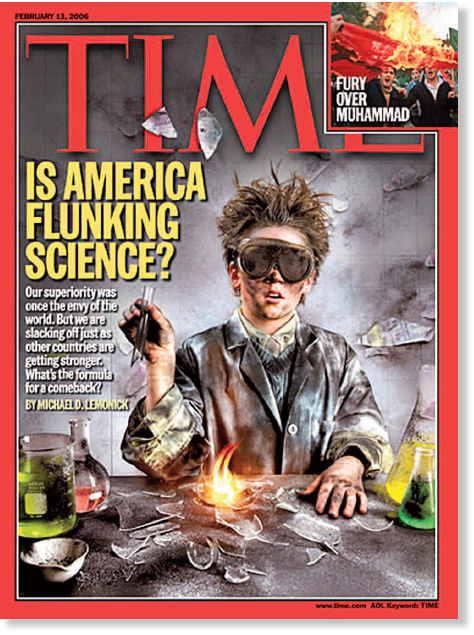
In 1936, Inge Lehmann discovered the inner core, an object at the center of Earth almost as large as the Moon and about three times as massive, that, since about 1940, was thought to be iron in the process of freezing. In 1979, I published an entirely different idea of the inner core's composition. The scientific paper was communicated by Nobel Laureate Harold C. Urey to theProceedings of the Royal Society of London [14] and I received a complimentary letter from Inge Lehmann. But instead of debate, discussion, and experimental and/or theoretical verification/refutation, I received silence from the geophysics community, not only on that discovery, but on a host of discoveries that followed as a consequence [15]. Real scientists welcome new ideas and advances as they open the door to more new ideas and further advances. Science-barbarians, on the other hand, ignore what they do not like, and by ignoring, deceive the scientific community, the general public, and the U.S. Government, which typically funds their questionable endeavors.
In 1838, in an address before the Young Men's Lyceum of Springfield, Illinois, Abraham Lincoln stated: "At what point, then, is the approach of danger to be expected? I answer if it ever reach us, it must spring up amongst us. It cannot come from abroad. If destruction be our lot, we must ourselves be its author and finisher." Later, U.S. president Abraham Lincoln unknowingly helped to sow the seeds for America's self-destruction when in 1863 he signed into law the Act of Incorporation of the National Academy of Sciences, which states in part: "The National Academy of Sciences shall... whenever called upon by any department of the Government, investigate, examine, experiment, and report upon any subject of science or art."
Has the National Academy of Sciences ever advised the U. S. Government of the flaws in the operating procedures of science-funding agencies, such as I have disclosed [1, 2], which are corrupting and trivializing American science? Has it ever revealed the existence of organized science-suppression under the guise of secret 'peer review' among the so-called professional societies, including within the National Academy of Sciences, the documentation of which I have provided to the president of NAS, and the consequences of which will cost American taxpayers countless millions of wasted tax dollars? I doubt it. Despite ever-increasing budgets, American science and education continues to decline toward third-world status as it has for decades. In personal, medical, legal, and business matters, it is common practice to hire an advisor. We all do that. If the advice proffered proves to be faulty, we fire the advisor and hire another. In my opinion, the United States Congress should fire the U.S. National Academy of Sciences, and find other sources of scientific and educational advice.
Suppressing and ignoring advances in science can have serious, real-world consequences. The Earth is constantly bombarded by the solar wind, a fully ionized and electrically conducting plasma, heated to about 1,000,000° C. Fortunately, Earth's self-generated magnetic field deflects the brunt of the solar wind safely around and past our planet, protecting humanity from the Sun's relentless onslaught. But reversal or demise of the geomagnetic field will doubtlessly be catastrophic, a calamity of unparalleled magnitude for our technologically-dependent civilization.
When the geomagnetic field collapses, vast segments of the population will be without electricity. Electrical power grids will act like uncontrolled generators as the charged-particle flux of the rampaging solar wind sweeps past, inducing into their lines suicidal bursts of electrical current that short-circuit and destroy essential elements of the power grid. Powerful, equipment-wrecking electrical currents will likewise be induced in gas and oil pipelines, causing explosions and fires. Electrical charges will build up on surfaces everywhere and reach staggeringly high potentials at edges and sharp points, posing risks of electrocution and igniting fires. Satellites will no longer function, their electronics fried by the plasma onslaught; there will be widespread failure of both communication and navigation systems. And, even more seriously, the long-term, unknown, but certainly adverse, impact on health will be severe.
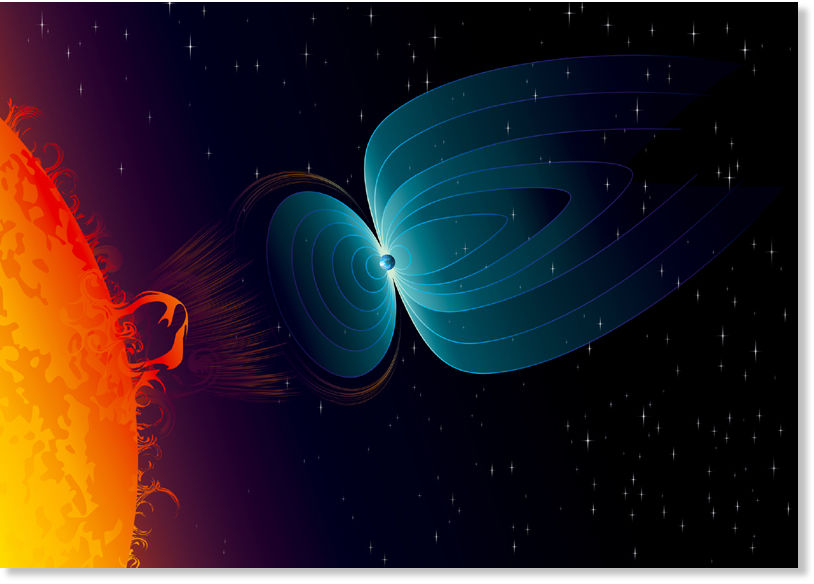
Until recently, reversals of the geomagnetic field or its complete demise were thought to be events in the far-distant future and to occur over a long period of time. But that may have changed dramatically.
Notice that as you heat a pot of water on the stovetop, before it starts to boil, the water begins to circulate from bottom to top and from top to bottom. This is called convection and it can be better observed by adding a few tea leaves, celery seeds, or the like, which are carried along by the circulation of water. It occurs because heat at the bottom causes the water to expand a bit, becoming lighter, less dense, than the cooler water at the top. This process of convection is an unstable, top-heavy arrangement which attempts to regain stability by fluid motions.
In 1939, Walter Elsasser proposed that the geomagnetic field is produced by convection motions in the Earth's fluid core that are twisted by the planet's rotation to form a dynamo. For seventy years, the geophysics community has assumed that convection 'must' exist in the core. Untold millions of dollars have been spent on modeling convection and its applications in the Earth's fluid core.
On January 27, 2009, I submitted a brief but important scientific communication to Physical Review Letters which demonstrated that convection is physically impossible in the Earth's fluid core because: (1) The core is too bottom-heavy due to compression by the weight above; (2) The core-bottom cannot remain hotter than the top, as required for convection, because the core is wrapped in an insulating blanket; and, (3) The 'Rayleigh Number' has been wrongly applied to justify core-convection. I suggested instead that the geomagnetic field is produced by Elsasser's mechanism operating in the nuclear georeactor sub-shell. From bottom to top in the review process atPhysical Review Letters and at the journal's sponsor, the American Physical Society, there were no scientifically-valid, substantive criticisms, only pejorative remarks and misrepresentations, including those by one or more members of the National Academy of Sciences. Of course, the paper was rejected by Physical Review Letters and its pre-print was 'buried' by arXiv.org in General Physics [16], which effectively hid it from view of U.S. Government science-funding officials, almost guaranteeing that fluid-core modeling activities would continue wasting taxpayer-funds on fruitless, physically impossible endeavors. But there is a far, far more serious implication stemming from the unwarranted rejection and 'burial' of this manuscript.
Earth's fluid core comprises about 30% of the mass of the planet; the nuclear georeactor is only one ten-millionth as massive, meaning that disrupted convection in the georeactor could lead to very rapid changes, including rapid reversals of the geomagnetic field. Think of it this way: the direction and speed of a child's tiny, self-moving toy train can be changed much more rapidly with far less force than that of the longest and heaviest, fully loaded, full-size freight train. From ancient lava flows, scientists have recently confirmed evidence of episodes of rapid geomagnetic field change - six degrees per day during one reversal and another of one degree per week - were reported [17, 18]. The relatively small mass of the georeactor is consistent with the possibility of a magnetic reversal occurring on a time scale as short as one month or several years. The recently observed more-rapid-than-usual movement of the North magnetic pole toward Siberia is thought by some to suggest that a reversal is imminent, although there is great uncertainty. Because of the global catastrophic significance, suppressing science related to the possibility of very rapid geomagnetic field changes, in my view, is tantamount to a betrayal of trust and an act of treason against humanity.
For the good of all, now is the time to rid science of the charlatans and the science-barbarians, and to create an environment where science can flourish in truth and where scientists can work freely without fear of retribution or denouncement for challenging extant ideas or for failing to adopt the 'politically correct' consensus-approved storyline. I have described four major, science-crippling flaws, instigated by the U.S. National Science Foundation a half-century ago, that are still in effect today at NSF, and at other U. S. Government science-funding agencies, and have suggested practical ways to correct them [1]. Implementation should not be too difficult; it just requires courage and integrity.
References:
1. Herndon, J. M., American Science Decline: The Cause and Cure www.bestthinking.com/articles/law/government_law/federal_regulation/american-science-decline-the-cause-and-cure
2. Herndon, J. M., Peer Review Folly: Independent Critique and Recommendations www.bestthinking.com/articles/law/government_law/federal_regulation/peer-review-folly-independent-critique-and-recommendations
3. Josephson, B. D., Covert censorship by the physics preprint archive. www.tcm.phy.cam.ac.uk/~bdj10/archivefreedom/main.html
4. Herndon, J. M., Planetary and protostellar nuclear fission: Implications for planetary change, stellar ignition and dark matter.Proceedings of the Royal Society of London, 1994. A455: p. 453-461.
5. Herndon, J. M., New concept for internal heat production in hot Jupiter exo-planets, thermonuclear ignition of dark galaxies, and the basis for galactic luminous star distributions. Current Science (India), 2009. 96: p. 1453-1456. http://nuclearplanet.com/Herndon%20Current%20Science%2090610.pdf
6. Herndon, J. M., Nuclear fission reactors as energy sources for the giant outer planets. Naturwissenschaften, 1992. 79: p. 7-14.
7. Herndon, J. M., Feasibility of a nuclear fission reactor at the center of the Earth as the energy source for the geomagnetic field.Journal of Geomagnetism and Geoelectricity, 1993. 45: p. 423-437. http://nuclearplanet.com/Herndon%20JGG93.pdf
8. Herndon, J. M., Sub-structure of the inner core of the earth. Proceedings of the National Academy of Sciences (USA), 1996. 93: p. 646-648. http://nuclearplanet.com/pnas-1996.pdf
9. Herndon, J. M., Nuclear georeactor origin of oceanic basalt 3He/4He, evidence, and implications. Proceedings of the National Academy of Sciences (USA), 2003. 100(6): p. 3047-3050. http://nuclearplanet.com/pnas%202003.pdf
10. Herndon, J. M., Nuclear georeactor generation of the earth's geomagnetic field. Current Science (India), 2007. 93(11): p. 1485-1487. http://nuclearplanet.com/Herndon%20Current%20Science%2071210.pdf
11. Hollenbach, D. F. and J. M. Herndon, Deep-earth reactor: nuclear fission, helium, and the geomagnetic field. Proceedings of the National Academy of Sciences (USA) , 2001, 98(20): p. 11085-11090. http://nuclearplanet.com/pnas%202003.pdf
12. Herndon, J. M., Nature of planetary matter and magnetic field generation in the solar system. Current Science (India), 2009. 96: p. 1033-1039. http://nuclearplanet.com/Herndon%20Current%20Science%2090425.pdf
13. Herndon, J. M., Inseparability of science history and discovery. History of Geo- and Space Science, 2010. 1: p. 25-41. http://nuclearplanet.com/hgss-1-25-2010.pdf
14. Herndon, J. M., The nickel silicide inner core of the Earth. Proceedings of the Royal Society of London, 1979. A368: p. 495-500.
15. Herndon, J. M., Brief Biography. http://nuclearplanet.com/JMH%20Biography.html
16. Herndon, J. M., Uniqueness of Herndon's georeactor: Energy source and production mechanism for Earth's magnetic field. arXiv.org/abs/0901.4509, 2009. http://nuclearplanet.com/Herndon%20Uniqueness.pdf
17. Bogue, S. W., Very rapid geomagnetic field change recorded by the partial remagnetization of a lava flow. Geophysical Research Letters, 2010. 37: p. doi: 10.1029/2010GL044286.
18. Coe, R. S. and M. Prevot, Evidence suggesting extremely rapid field variation during a geomagnetic reversal. Earth and Planetary Science Letters, 1989. 92: p. 192-198.
About the author:

J. Marvin Herndon is well trained: B.A. in physics (UCSD), Ph.D. in nuclear chemistry (Texas A&M), and post doctoral apprenticeship in geochemistry and cosmochemistry under Hans E. Suess and Harold C. Urey. Dubbed a "maverick geophysicist" (by The Washington Post), this interdisciplinary scientist is responsible for identifying the composition of Earth's inner core as nickel-silicide and for demonstrating the feasibility of a natural nuclear reactor at Earth's center as the energy source and production mechanism for the geomagnetic field. His professional life has been one of discovering longstanding fundamental scientific mistakes; now he reveals managerial mistakes that have been crippling and corrupting American science and education for decades.
![]()
![]()
Disclaimer:
Some material presented will contain links, quotes, ideologies, etc., the contents of which should be understood to first, in their whole, reflect the views or opinions of their editors, and second, are used in my personal research as "fair use" sources only, and not espousement one way or the other. Researching for 'truth' leads one all over the place...a piece here, a piece there. As a researcher, I hunt, gather and disassemble resources, trying to put all the pieces into a coherent and logical whole. I encourage you to do the same. And please remember, these pages are only my effort to collect all the pieces I can find and see if they properly fit into the 'reality aggregate'.
Personal Position:
I've come to realize that 'truth' boils down to what we 'believe' the facts we've gathered point to. We only 'know' what we've 'experienced' firsthand. Everything else - what we read, what we watch, what we hear - is what someone else's gathered facts point to and 'they' 'believe' is 'truth', so that 'truth' seems to change in direct proportion to newly gathered facts divided by applied plausibility. Though I believe there is 'truth', until someone representing the celestial realm visibly appears and presents the heavenly records of Facts And Lies In The Order They Happened, I can't know for sure exactly what "the whole truth' on any given subject is, and what applies to me applies to everyone. Until then I'll continue to ask, "what does The Urantia Book say on the subject?"
~Gail Bird Allen
![]()
![]()

